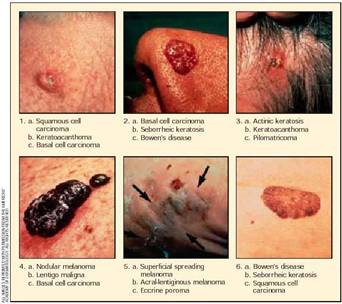
A team of researchers from University of Missouri Columbia has developed a method to detect melanoma cells when they start to spread into the blood stream and before they develop into tumors.
It is extremely important to identify the cell into the blood stream before they start to grow into a tumor. This may make the difference between curable an incurable melanoma.
Using photoacoustics, or laser-induced ultrasounds, cancer cells can be detected with higher efficiency than using current methods.
According to John Viator photoacoustics can identify metastasis before a tumor can be detected with MRIs or CT scans. The method is more sensitive and less expensive because the action can be performed on equipment that is more simplistic than the methods used to diagnose melanoma (MRIs or CT scans).
“Currently, metastatic disease, the phase of cancer where it is spreading throughout the body, is detected by performing body scans, looking for macroscopic tumors that are greater than a few millimeters in size. This method is a new paradigm where we detect cancer’s spread in the bloodstream by detecting single cells in blood samples. The ability to detect metastatic disease when it is still at the single cell level may allow treatment to be done in much lower doses, so that chemotherapy can be performed in such a way that is much easier on the patient,” said by John Viator, associate professor of biological engineering and associate professor of biomedical engineering and dermatology, who is leading the team.
Photoacoustics are being produced commercially for various cancer studies and clinical trials to receive the United States Food and Drug Administration’s approval.

“We hope one day to use this method as a general screening tool for everyone, just like women have to get mammograms. After a certain age, it would be part of your routine physical. If you’re predisposed to metastatic melanoma and if the disease is ‘caught early’ by our detection system before the patient shows symptoms, then the chances of survival can be up to 90 percent,” said biological engineering graduate Ben Goldschmidt.
He has worked with the MU researchers team on designing a disposable flow cell for a melanoma detection system to make the device to be used commercially.
Melanoma is a malignant tumor developed from cells that produce the dark pigment (melanin), called melanocytes.
Melanin induces the color of the skin. Melanocytes are found mostly in skin, but they are also presents in other parts of the body, including the bowel and the eye (uveal melanoma). Melanoma can develop in any part of the body that contains melanocytes.
Melanoma is occurs less frequent than other skin cancer, but is more severe and causes the most of the deaths from skin cancer. The disease can start from a mole that is scratched very often, or cut or too exposed to the ultraviolet radiation. Melanoma can become metastatic and spread rapidly into other organs, and the treatment is difficult.
This year around 76,250 new cases of melanoma will be diagnosed and about 9,180 from this cancer will occur, according to the estimations made by the National Cancer Institute.